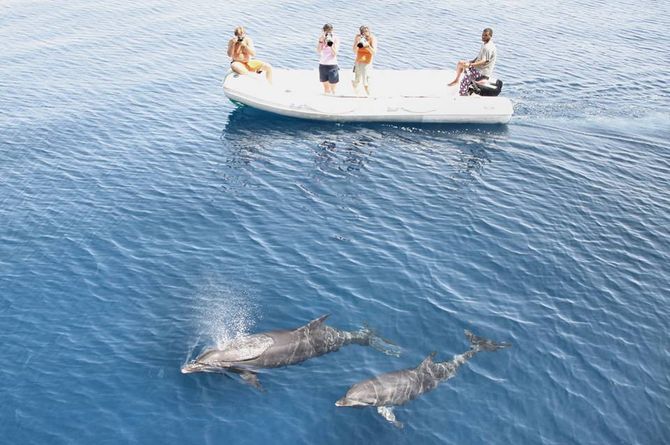HEPCA 2011 Review - Red Sea Dolphin Project
The Red Sea Dolphin Project, the first survey completely dedicated to study abundance, distribution and habitat use of cetaceans in the southern waters of the Egyptian Red Sea, concludes its second year of research at sea. The following is a brief summary of the accomplishments of 2011: - The 2011 summer expedition in June-July: almost 2,500km were navigated during the 27 days spent at sea, sailing between Marsa Alam and the remote reef of Qubbat 'Isa, close to the Sudanese border. Dolphins were spotted 44 times and 6,280 pictures were taken to be analyzed for photo-identification. The expedition was particularly fruitful from the scientific point of view, with two new important hot spots identified in the south: one for spinner and one for Indo Pacific bottlenose dolphins. - The Satayah expedition in July 2011: The RSDP team moved to Satayah where, for 8 consecutive days, dolphins’ movement in the presence and absence of swimmers and vessels was tracked from sunrise to sunset for a total of 79 hours (about 9 hours a day) in order to evaluate impacts of human activities on their habitat use. Important data on dolphins’ behavior and reaction to dolphin watching and swimming-with will be soon available on the HEPCA website. Data collected confirmed that the southern Egyptian Red Sea waters are important for many species, each of them showing differences in their habitat preferences: common bottlenose and pantropical spotted dolphins, for example, seem to prefer offshore areas, while Indo Pacific bottlenose and humpback dolphins are definitely more coastal. The importance of the RSDP had been highlighted by the Earthwatch Institute that, last June, included the project in its catalogue. That all for this year! Looking forward to enhance the understanding of marine mammals’ ecology next year!



